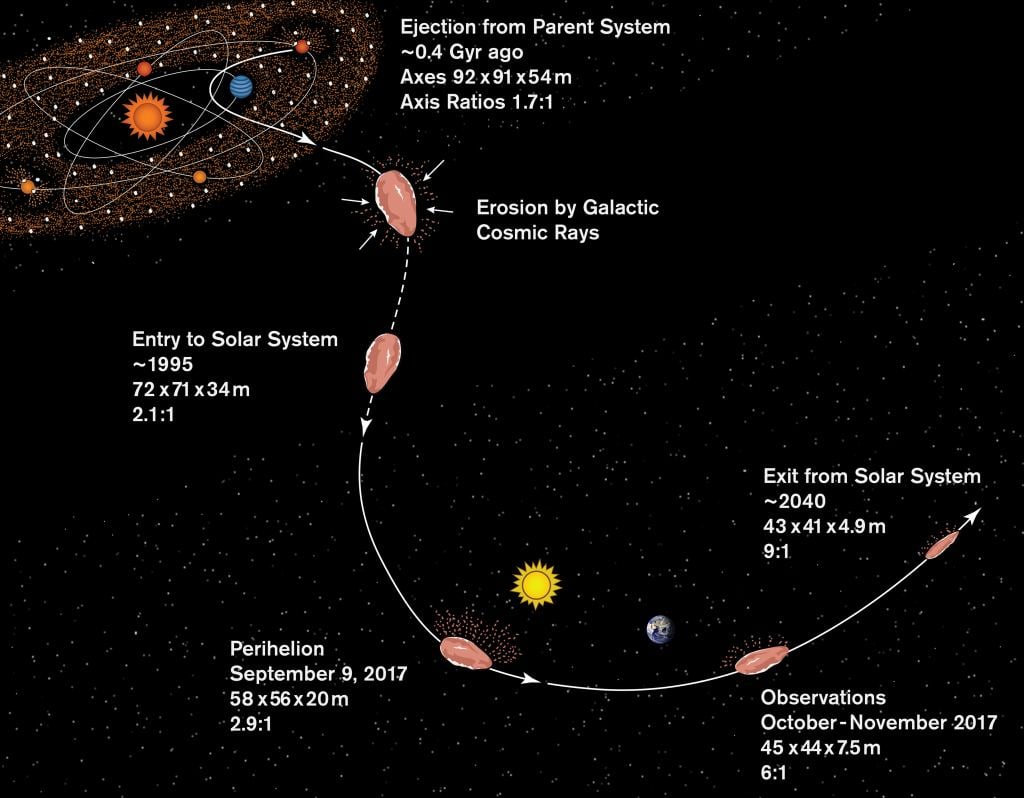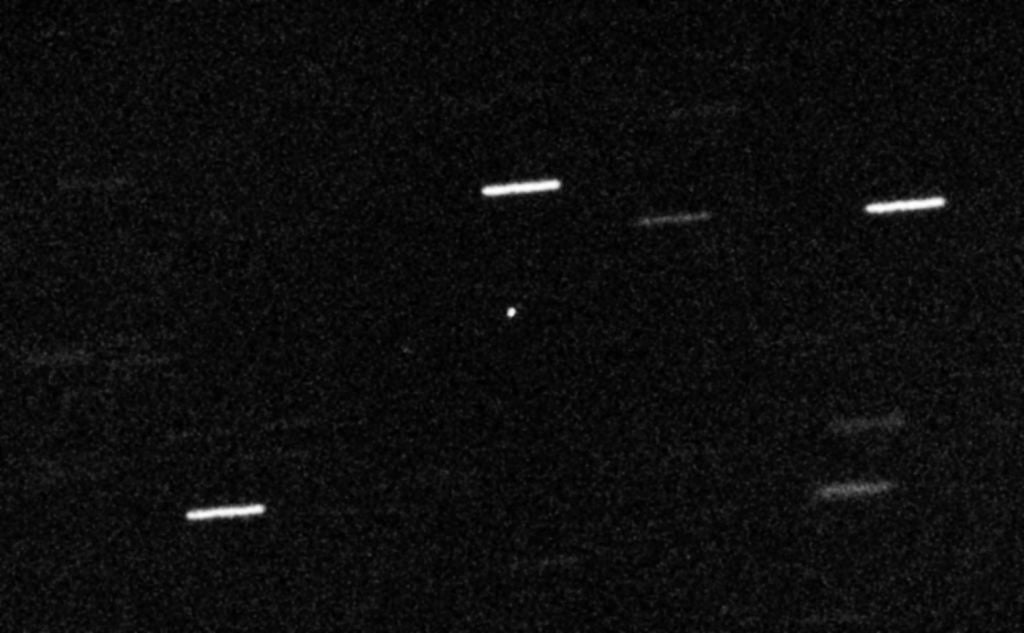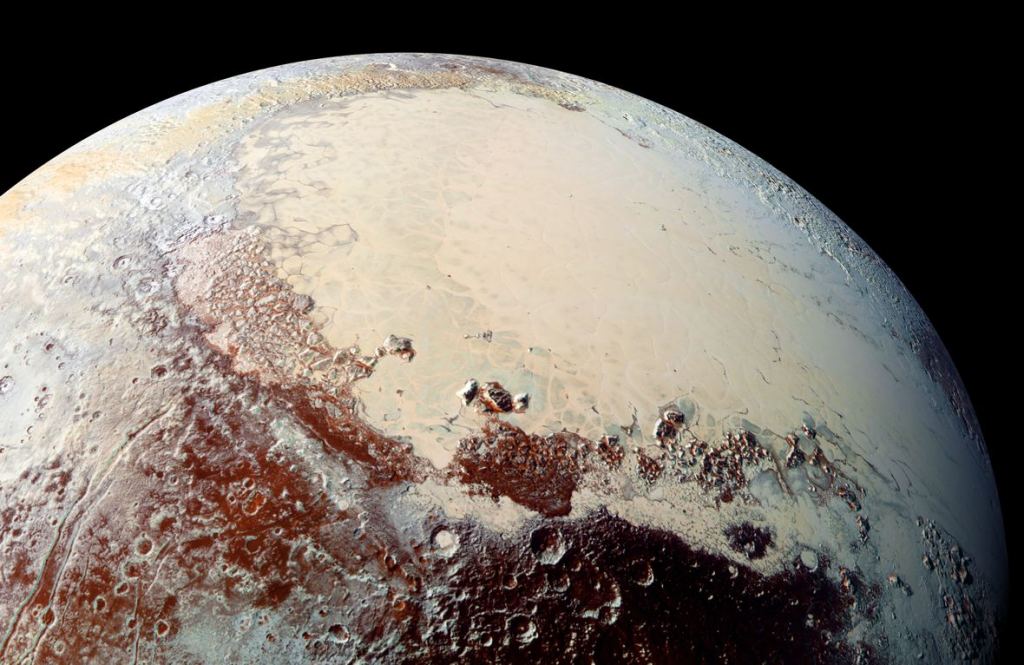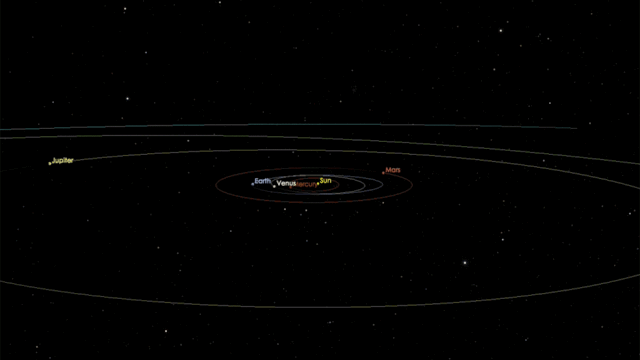In 2017, the Panoramic Survey Telescope and Rapid Response System (Pan-STARRS) made history with the detection of a mysterious object called Oumuamua (Hawaiian for scout). Unlike countless other small objects that Pan-STARRS had detected before, Oumuamua seemed to originate from beyond the solar system. The first known interstellar object detected in the solar system, Oumuamua, with its odd trajectory, strange shape, and unusual acceleration, led to a flurry of activity in the astronomical community and an avalanche of wild claims of extraterrestrial space ships from various fringes of the media. A pair of papers published by Alan Jackson and Steven Desch of Arizona State University earlier this month reveals the best fit model for the identity of our extrasolar visitor. No, it isn't aliens, but it's pretty spectacular. Oumuamua seems to be a shard of a Pluto-like planet from another solar system!
I spoke with Dr. Steven Desch, professor of astrophysics at the School of Earth and Space Exploration at Arizona State University, about the ground-breaking research on the interstellar object.
"We were basically trying to figure out what this thing is. It's the first object that entered the solar system from outside the solar system." Even though Oumuamua was detected back in 2017, it was clear from his tone that Desch was passionately curious about the interstellar visitor.
Desch went on to describe how Oumuamua differed from comets and displayed some very unusual characteristics. On its way into the solar system, Oumuamua did not display a comet-like coma. In fact, for its entire period of observation, it remained point-like. Despite this, Oumuamua showed a 'rocket effect' as it flew away from the Sun. "...like comets, it was getting a little bit of an extra push away from the sun. Just one part in a thousand, you know, it was slowing down as it left the sun but not quite enough...the push was just stronger than we'd ever seen for a comet."
Sublimation of ice (astronomically, the term ice can refer to a wide range of substances, from water to nitrogen, to ammonia, to hydrogen, etc.) on the sunlit side of a comet pushes the comet away from the Sun. The lack of a coma and the rocket effect's strength sparked speculation about what ice it could be. "For one thing, water would not work. If it was water evaporating, you couldn't get as strong as an effect, so that was a little bit weird." More on the mysterious ice in a moment.
Another mystery of Oumuamua is its unusual shape. While describing how we know its shape, Desch was careful to clear up some misconceptions. " People have this misconception that we took a [detailed] photograph of it. When we did, it was always just a point. [The point] got brighter and dimmer every few hours, and it was a very extreme change in brightness. The only thing that made sense was if it were a very elongated shape. The first thing people tried was a cigar shape. So the first thing that got out there was that it's cigar-shaped, but very soon after that, people realized, 'you know what would work is if it was a pancake-shaped disk, with a six to six to one axis ratio.' That actually kind of works better. You'd have to line it up just right if it's a cigar, but a coin, you know, flipping around makes it get skinny very quickly and frequently."
As the alien spaceship theories built up, Desch and his collaborator Jackson were motivated to figure out what really was going on with Oumuamua. "We considered hydrogen, we considered water, for one reason or another they don't work, but nitrogen ice worked really well. One of the other things we realized that others hadn't is that they were assuming it was reflecting as much light as a comet, which is not much. Comets reflect about 10% of the light that hits them (less than an average parking lot!)." If the object were considerably shinier than previously expected, its unusual rocket effect would be much easier to explain. Another feature of nitrogen is that it is not going to create a visible coma. This makes sense when we consider that nitrogen is the primary component of the mostly invisible air all around us.
What are some of the clues that show us that nitrogen ice is the right direction to go in the quest to understand the composition of Oumuamua? "...using nitrogen ice, and allowing it to be shiny because it's ice, lets you have a smaller body with a big push. It turns out that matches the non-gravitational acceleration that we were seeing. Then some other things fell into place like we needed it to be reflecting 63% of the sunlight back to Earth. It turns out that is exactly the fraction of sunlight nitrogen ice on Pluto reflects back, and the nitrogen ice exists on Pluto, so it's a natural thing; it starts to explain all the other things."
Unlike comets, the material on Pluto is differentiated. This allows for shiny, clean, nitrogenous glaciers. The spectacular images returned by New Horizons shows enormous ice fields of nearly pure nitrogen ice that would behave remarkably similar to Oumuamua if an appropriately sized chunk were to be hurled towards the Sun.
While far more pure in composition than a comet, Pluto also contains some methane. "If [Oumuamua] is a piece of ice like we on Pluto's surface, it could also have a little bit of methane in it. Maybe [enough to] turn it red. It turns out it's exactly as red as Pluto's surface."
Another feature of nitrogen ice that fits Oumuamua's behavior perfectly is the fact that it sublimates into a gas at very low temperatures. Desch posits that Oumuamua lost 90-95% of its mass in the trip through our solar system. Desch's co-author Jackson paints a vivid picture of this process, invoking the sliver-like remnants of once-chunky bars of soap as they lose the bulk of their mass over time.
The sum of the research and extensive modeling paints an inspiring picture. Oumuamua doesn't behave like a comet or an asteroid, but rather as a fragment of a Pluto-like extrasolar world violently ejected from its star system millions or billions of years ago. After a long cold journey through interstellar space, the gravity of the Sun took hold. As the icy shard hurtled towards the Sun, the vast bulk of it was stripped away by the energy of our star. By the time Pan-STARRS picked it up, Oumuamua was a brilliantly shiny, reddish, coin-shaped, nitrogen pancake tearing through the inner solar system and blowing the minds of Earth-bound astronomers.
If all this wasn't spectacular enough, it is thought that Oumuamua is not a particularly rare phenomenon. It was observed within only the first few years of Pan-STARRS. Who knows what interstellar objects will hurtle through our neighborhood going forward? The next time one of these things comes through, you can be sure that astronomers like Desch and Jackson will be watching.
*Lead Image: An artist's depiction of the reddish disk of Oumuamua. Dr. Desch claims that most people either see the Millenium Falcon or some kind of food. Credit: William Hartmann*
Follow Ralph Crewe on Twitter @RalphCrewe
Watch Ralph Crewe explore unusual and fascinating topics on YouTube
MORE
 Universe Today
Universe Today




